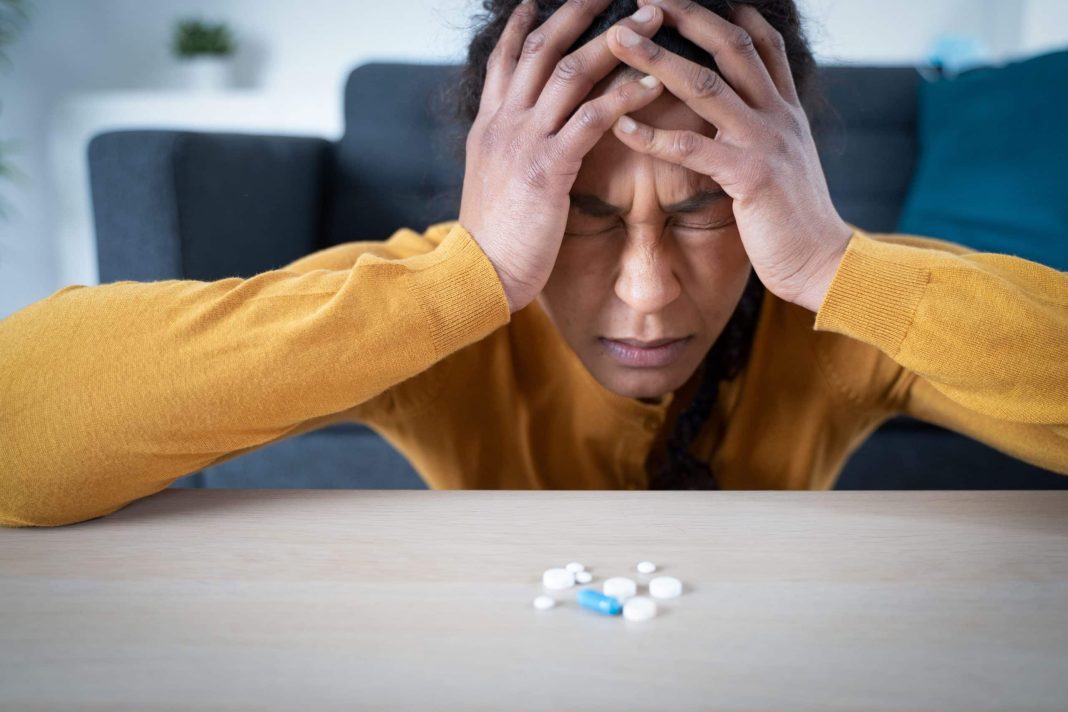Amanita mushrooms are becoming the new name in drugs, for naturally helping people with sleep and anxiety. But do they cause the same issues as the main pharma drugs known for this, benzodiazepines? And if not, can the muscimol from Amanita mushrooms not only replace use of benzodiazepines, but help those with benzo addiction, to come off the pills? Let’s take a look at what’s out there.
What are Amanita mushrooms?
Amanita mushrooms, specifically Amanita muscaria and Amanita pantherina, are species in the Amanita mushroom genus; shared as well with Amanita phalloides, and other death-causing species. This placement means the designation of a ‘poisonous mushroom’, though in the case of muscaria and pantherina, there are no deaths attached.
These mushrooms originate in cooler places, like Northern Europe and Siberia, and are therefore barely known of in the Americas region. This means they also evaded illegalization by not being visible in the latter part of the last century, when governments around the world were going through a flurry of drug illegalization measures. Now, all these years later, they’re making more of a name for themselves in places that never heard of them before.
The red or brown-headed mushrooms are known for their shape, and white spots. The visual is so appealing, it made it into the Super Mario Brothers game, meaning without knowing or understanding what they are, many people are familiar with how they look. When used properly, these mushrooms produce relaxation, euphoria, and hallucinations, but in a totally different way from psilocybin mushrooms. In fact, the only thing they have in common, is that they’re both fungi.
Hi, nice to see you. We’ll keep you updated on everything, just sign up for the Cannadelics Weekly Newsletter. Plus, you’ll get a bunch of deals on cool stuff like cannabis buds, vapes & smoking equipment, edibles, cannabinoid compounds (like HHC), amanita mushroom products, and so much more. Let’s all feel good, responsibly!
The mushrooms, which contain ibotenic acid (the more sick-inducing compound which can be decarbed out) and muscimol, (the compound of interest that promotes great effect on GABA in the brain); have been used for medicinal, spiritual, and recreational purposes for hundreds (maybe thousands) of years. They’re even a part of the Santa story, as reindeer were native to muscimol-using tribes, and were known to eat the mushrooms and get all loopy.
Muscimol, for its part, is a solid white or colorless compound which is classified as an isoxazole. It’s a potent and selective orthosteric agonist. This term is important because it describes how muscimol binds directly to GABAA receptor sites, unlike other compounds that bind on the protein surface instead (allosteric). Drugs like these, when there is a high affinity, can block other compounds from binding.
Muscimol has many benzodiazepine-like effects, including sedative, hypnotic, and depressant effects, while also producing hallucinogenic effects. Muscimol has also shown not to cause addiction, though it does activate the ventral tegmental area (VTA) in a similar way, and this area is involved in the brain’s reward system. This could be in part because muscimol acts as an agonist, while benzos work as positive modulators; the whole difference between orthosteric and allosteric, already mentioned.
What are benzodiazepines?
First and foremost, benzodiazepines are pharmaceutically made, which means they’re synthetic drugs, unlike the mushrooms just spoken of, which are naturally living plants. These drugs, often called ‘benzos’, are depressant drugs that at the core of their chemical structure, contain the fusion between a benzene ring and diazepine ring. The first one discovered in 1955, was Librium, and was already out as a medication by 1960. Valium came out three years later.
The biggest neural impact these drugs have, is on gamma-aminobutyric acid (GABA), the same neurotransmitter that Amanita muscaria mushrooms affect. The drugs work specifically at GABAA receptors, and produce sedative and hypnotic effects, along with anxiolytic, muscle relaxant, and anticonvulsant effects. The drugs are used to treat a range of issues like: anxiety, panic, and sleep issues, as well as for agitation, seizure disorders, muscle spasms, as a way to aid in alcohol withdrawal, and as pre-medicine for certain medical procedures.
While they were always spoken about as safe in the past, and still are to a degree, this goes in the face of the rising death toll associated, whether from the drugs themselves, or from mixing them with other substances like alcohol or opioids. In 2020 alone, the National Institute on Drug Abuse (NIDA) reported that benzos were fully or partially responsible for 12,290 overdoes deaths.
Beyond this, not only is the line about safety odd considering the death toll, it hardly accounts for the large and growing number of people addicted to them. This is likely because the withdrawal can be very difficult. Benzo withdrawal is known as an intense experience, and can last a very long time, often called a protracted withdrawal (which is essentially a psychological withdrawal).
There is a high rate of benzo addiction in general. While these numbers sound almost made-up, research estimates show that even at therapeutic doses, long-term use (defined as three months or more), can result in 20-100% of people becoming physically addicted. That’s saying that *maybe everyone gets addicted. What’s more, they’re not known to keep providing positive effects beyond a point, and can cause worse rebound symptoms than what they’re used to suppress, upon stopping.
Withdrawal symptoms from these drugs include: anxiety, depression, depersonalization (feeling detached within oneself), derealization (feeling like the world around isn’t real), sleep problems, tactile hypersensitivity, tremors, shakes, muscle pain, random pains, twitching, abdominal issues, and headaches. For those using the pills to treat something like anxiety, the rebound anxiety of withdrawal, can be more intense than what drove the patient to seek treatment in the first place; which exemplifies why getting off these drugs is so incredibly hard.
One study from 2005 called Long-term outcome after discontinuation of benzodiazepines for insomnia: a survival analysis of relapse, shows that out of 47 adults trying to get off the medications, 42.6% could not stay off as of a 24 month follow-up. A 2003 study entitled Predictors of relapse after discontinuation of long-term benzodiazepine use by minimal intervention: a 2-year follow-up study, painted just as abysmal a picture. Out of 109 subjects who were also studied over a two-year period, 51% relapsed. It’s good to remember that all these users wanted to stop medication.
Can amanita mushrooms help with benzo addiction?
That muscimol affects reward sites, but without causing addiction, makes it very interesting. Both for treating certain issues, and for dealing with benzo addiction. In fact, muscimol is pointed to for actually restoring GABAA receptor modulation. Unfortunately, there’s no formal research on muscimol for benzo addiction, but like with much of life, this doesn’t mean there aren’t personal stories on the topic.
In a Reddit post from within the last year, an interested benzo user was curious about other people’s experiences with this. Not only were results supportive of muscimol helping to end benzo addiction, but tips were given; like how to taper the benzos, and to use compounds like kava before the muscimol to improve binding. Everyone who responded to this thread had a positive story. Unfortunately, as these mushrooms are still not as well-known as other drugs, its hard to find a lot of useful message board posts; most others are simply people speaking out of opinion, with no knowledge on the topic, or experience with it.

In theory though (and in user practice), they work for this. And, even if they can’t help with a detox, at least they can provide another way to deal with symptoms of anxiety and sleeplessness; without the addiction and withdrawal issues of benzodiazepines. They pose such a great benefit here, that like many other times in life, the knowledge of this compound brings up the agonizing question of, why are people still being put on benzos when these mushrooms exist?
There actually is a medication in trials that’s based off muscimol, called gaboxadol. However, its repeatedly tested for smaller, lesser-known disorders, instead of being used to treat anxiety, sleeplessness, and benzo addiction. One could ask why. But one could also ask, despite a rising death toll, why opioids are still prescribed; especially since the non-addictive ketamine offers better benefits. I guess its all about the money in the end; which means if you want this as an answer, for now, you’ll have to get the mushrooms on your own.
Conclusion
Truth is, if you’re having an issue that necessitate benzodiazepines, (according to you or your doctors), maybe try these mushrooms instead. They’re legal in the US apart from one state, and may be an important key not only in dealing with anxiety and sleep issues, but in ending the mass benzo addiction issue that is only rising. There are also products entering the market like this one; which shows some companies out there do get it, even if big pharma prefers you stay on the benzos.
Welcome all! Cool that you’re here with us at Cannadelics.com; where we work hard to bring you the best independent reporting in the worlds of cannabis and hallucinogens. Join us whenever possible to keep updated on important events, and sign up for the Cannadelics Weekly Newsletter, so you’re never late to get the news.





